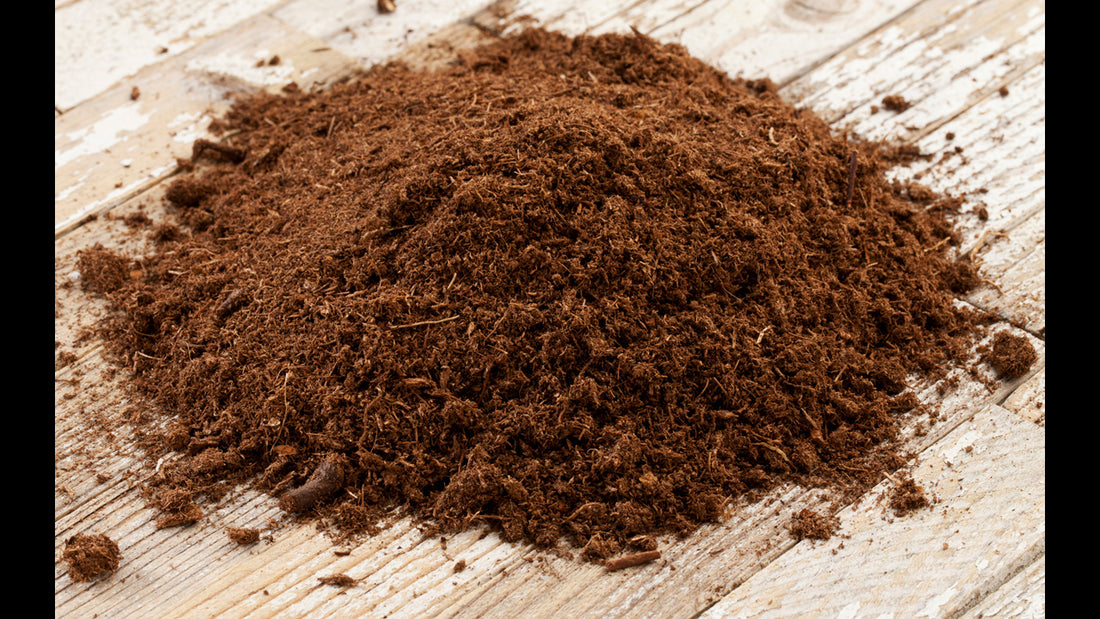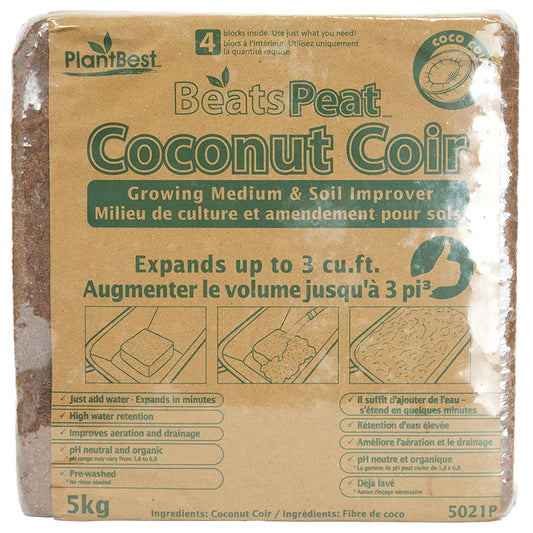This information is one part of a series focused on how to amend soil. Please see our resource center where we offer additional instructional videos and articles, as well as our bookstore.
Soil amendments play a pivotal role in enhancing soil structure, moisture retention, and overall fertility. A favored and helpful material used by gardeners and plant experts in the United States and other places. Made from old plants breaking down, this soft material comes from places like the north part of the world and is good for the soil.
Sphagnum Peat Moss: An Overview
Emerging as a garden superhero, especially for those dealing with sandy soils. When applied, it acts like a snug blanket for plants, ensuring their comfort and nourishment.
Whether you're cultivating vegetable gardens or tending to raised beds, peat moss becomes the superhero supporting root growth, bringing joy to your plants. It's equally magical for cover crops, ensuring they stay in optimal shape. When combined with wood chips, peat moss forms a dynamic duo, creating the perfect environment for plants to thrive. With peat moss in your garden arsenal, you transform your growing space into a joyful haven for healthy and happy plants.
Sphagnum peat moss, originates from the decaying of organic materials over extended periods in waterlogged environments. It primarily consists of partially decomposed sphagnum moss, resulting in a fibrous and spongy material. This decomposed organic matter becomes the secret ingredient, enriching the soil and contributing to the overall vitality of your garden.
Northern Hemisphere Origins: Peat moss is mainly sourced from bogs in the northern hemisphere, especially regions like Canada and northern Europe. These areas provide the ideal climatic conditions for the growth and decomposition of sphagnum moss, making them valuable sources of this gardening resource.
Soil Amendment Properties
Peat moss is like a sponge for your garden soil – it holds water and keeps it just right for plants. Picture it as a guardian for plant roots, making sure they have a cozy home. When peat moss teams up with soil, it creates a partnership that makes soil super healthy. It's like a secret ingredient in the recipe for good soil, ensuring that plants get all the nutrients they need. And guess what? Worms love peat moss too! When they work their magic with their castings, it's a party for plant roots. Plus, if your soil feels too tight and packed, peat moss is here to save the day by preventing soil compaction. With peat moss, your garden becomes a paradise where plants can drink up, roots can dance, and the soil is the happiest it can be!
Water Retention: One of the significant attributes of sphagnum peat moss is its ability to retain water. Its fibrous structure creates pore spaces within the soil, enhancing water retention and preventing rapid moisture loss. This quality proves particularly useful in soils that tend to dry out quickly.
Organic Soil Amendment: Sphagnum peat moss serves as an excellent organic amendment, enriching the soil with organic matter as it decomposes further over time. This enrichment fosters a favorable environment for beneficial microorganisms that contribute to soil health.
Application and Use
- Improving Soil Structure: When mixed into garden soil or potting mixes, sphagnum peat moss helps improve soil structure by lightening heavy clay soils and enhancing aeration in compacted soils. Its fibrous nature facilitates better soil drainage and root development.
- Amendment Quantity: A relatively small amount of sphagnum peat moss can make a substantial difference in soil properties due to its high absorbency and water retention capacity. Even a modest addition can significantly alter the soil's ability to retain moisture.
Considerations and Alternatives
- Environmental Impact: Despite its benefits, the extraction of sphagnum peat moss raises environmental concerns due to the slow regeneration rate of peat bogs. Conservationists advocate for alternatives or sustainable harvesting practices to reduce the impact on these sensitive ecosystems.
- Alternatives to peat moss: Several alternatives to sphagnum peat moss exist, offering similar soil enhancement properties. These alternatives include Coco Peat, composted bark, Rice Hulls, and various compost blends. These substitutes provide options for gardeners seeking eco-friendly amendments.
Sourced from decomposed organic materials in the northern hemisphere, serves as a valuable soil amendment prized for its water retention and soil enrichment qualities. It aids in improving soil structure, fostering better aeration, and contributing to overall soil health. But worries about keeping things safe for the Earth make people think about using other things that help the soil and nature in a good way. Gardeners and horticulturists weigh these factors to make informed choices when enriching their soils for optimal plant growth and health.You can find more information on soil drainage here in our resource center.
Peat Vs Coco
When it comes to choosing the perfect addition to your potting soil, peat moss stands out as a champion in comparison to coco coir. Not only is peat moss environmentally friendly, harvested from sustainable bogs, but it also boasts a neutral pH, making it versatile for a wide range of plants. Its exceptional water-holding capacity ensures optimal moisture levels for plant roots, creating a comfortable and nurturing environment. Unlike coco coir, peat moss is rich in plant nutrients, providing a natural source of essential elements that contribute to robust plant growth. With peat moss, you're not just enhancing your potting mix; you're investing in a gardening ally that supports both your plants and the planet.
Additional Resources
"How To Change Your Soil's pH" from Iowa State University Extension:
This article explains how Canadian sphagnum peat moss helps lower soil acidity, which is good for plants that like acidic conditions. It highlights that most peat moss is neutral or slightly acidic, but Canadian sphagnum peat moss, with a pH of 3.0 to 4.5, can effectively decrease soil pH. Read more from Iowa State University Extension.
"Peat moss" from Maryland Grows, University of Maryland Extension:
This article is part of a broader resource that aims to help Maryland residents with various gardening and soil improvement tips. While it does not focus exclusively on sphagnum peat moss, the extension provides a range of horticultural advice, including the use of peat moss in gardening. Explore more at Maryland Grows.
"Soilless Growing Mediums" from Oklahoma State University Extension:
Although not exclusively about sphagnum peat moss, this article includes important information about peat as a soilless growing medium. It describes the advantages of peat, such as its high moisture-holding capacity and its challenges, including its contribution to soil-borne diseases and environmental concerns. Discover more about soilless mediums at Oklahoma State University Extension.



5 comments
I thought putting a black weed barrier would my plants thrive. Man, was I wrong! It completely dries everything out, leaving you with a sandy soil. It takes a ton of watering, peat moss and soil to bring back the health of your garden. Bottomline: I’d rather pull the weeds than go through that again.
Don’t clear your leaves! The trees have roots that are very deep which send nutrients up to the top of the tree.. The leaves contain those nutrients And are fabulous and free for your garden. I go around and collect the leaves from neighbors.
CG, you can leave the moss, it will not hurt your berries, but sounds like you may have some critters feeding on your blueberry roots. You can fill the holes, but most likely, they will just come back. You can mulch with sphagnum peat moss, blueberries like acidic soil, so that will help.
Peat moss does NOT improve drainage!! It COMPLETELY stops drainage! I tested the drainage of orchid mix that came with peat moss and literally no water comes out the bottom of the pot. Peat moss literally prevents any water from draining! It’s a nightmare to get in your soil!!
I need help with my blueberries. The bases of the plants are covered with moss and moss is also growing under the ground cloth which is between the plants to control weeds! Also, when clearing the leaves from the area and getting ready to fertilize, I found a hole in the ground under several plants. Should I remove the ground cover and should I fill the holes? Is sphagnum peat moss the best mulch; I don’t have access to fir sawdust. The plants are on a hill and I am trying to keep any fertilizer and mulch from washing away. I am trying to keep organic.